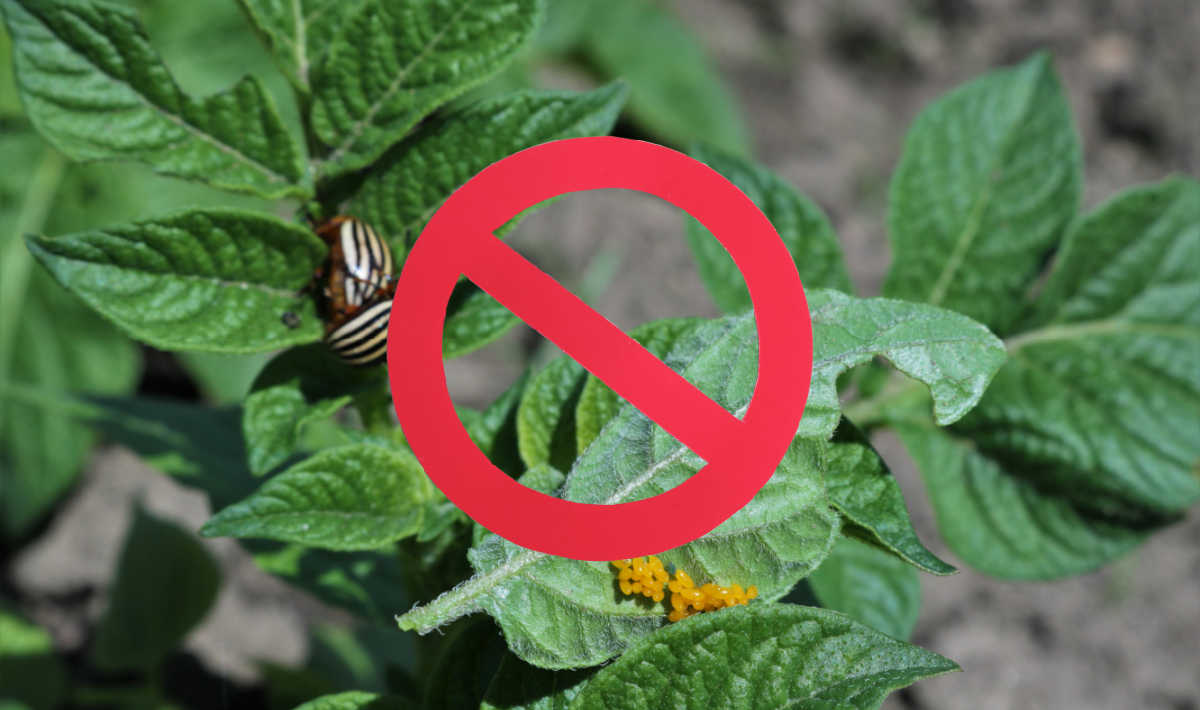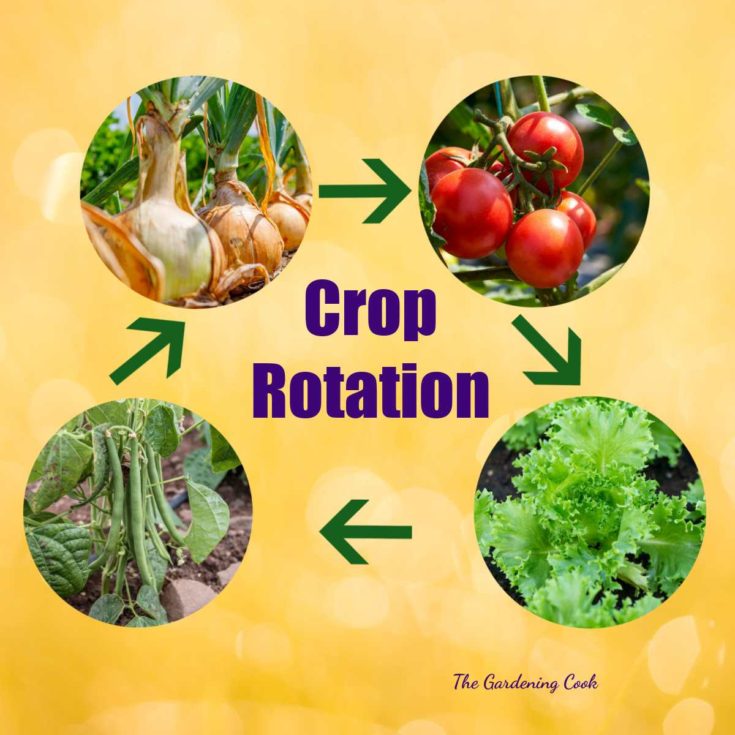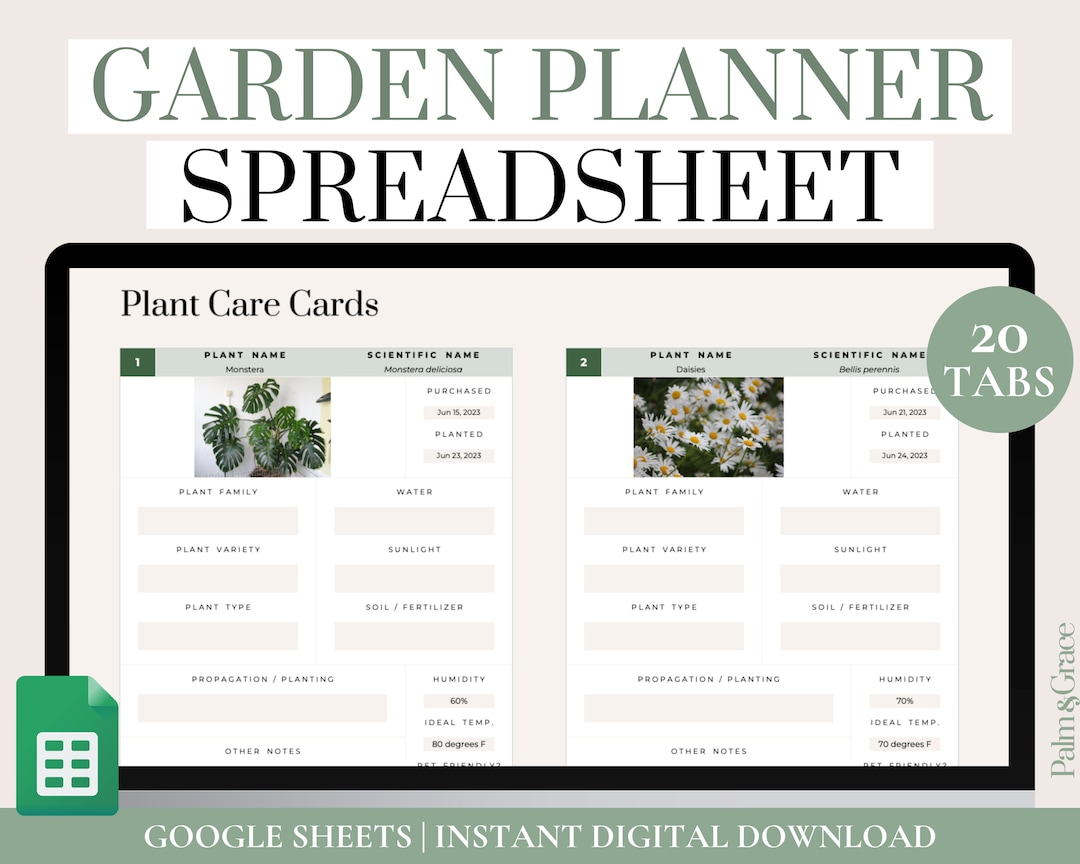Have you ever wondered, “What is crop rotation?” Well, you are not alone. Many of my readers ask me this very question.
Today we’ll be having a look at crop rotation in a vegetable garden and will learn why it is so important.
This time-honored technique employed by farmers worldwide maximizes the yield in a vegetable garden, promotes soil health, and controls pests and diseases naturally.
Keep reading to learn more about the ins and outs of this important vegetable gardening practice.

Are you a home vegetable gardener looking to increase your harvest and minimize problems in your garden? If so, crop rotation can greatly benefit your vegetable-growing experience.
What is crop rotation?
Crop rotation involves strategically changing the placement of crops in your garden each season, and it offers a range of advantages for home gardeners like you.
The basic rule of crop rotation is to avoid planting any closely related vegetables in the same spot for at least three years. By implementing crop rotation, you will naturally improve your soil health, control pests and diseases, and get better harvests out of your vegetable garden.
In crop rotation, different crops are grown in a specific sequence or order in the same place in your garden over a period of time. The practice involves intentionally changing the type of crops planted.

What is the purpose of crop rotation?
The primary goal of crop rotation is to break the cycles of pests and diseases that may affect specific crops and deplete your soil of the nutrients that it needs to grow vegetables.
Diseases such as verticillium wilt and late blight can survive several years in the soil and affect tomatoes and potatoes year after year.
There are many crop rotation benefits.
When you rotate crops, different plants with varying nutrient requirements are grown in succession, allowing the soil to replenish nutrients and reducing the risk of pest and disease buildup.
Additionally, crop rotation helps increases organic matter in the soil. This age-old practice has proven to be an effective and environmentally friendly way to maintain the health and productivity of your home garden.

How to rotate crops in a vegetable garden
Rotating crops in a home vegetable garden is a simple practice. Here’s a step-by-step guide on how to rotate crops in your garden
Crop families
Vegetables are grouped into different families based on their botanical relationships. This means that, for instance, veggies like tomatoes, peppers and eggplants belong to the Solanaceae family.
Alternatively, other vegetables such as lettuce, spinach and Swiss chard belong to the Asteraceae family while broccoli, Brussels sprouts and radishes belong to the Brassicaceae family. These are just a few examples. There are many more vegetable families.
The family crop classifications will help in planning the rotations in your vegetable garden.
When planting vegetables, it’s important to ensure that you are effectively rotating crops and avoiding planting the same family in consecutive years.
By rotating crops from different families, you can minimize the risk of nutrient depletion, pest and disease buildup, and maintain the overall health of your garden.
Planning your crop rotation
Before you start to plant, make a map of your garden area. Create a layout for it and divide the space into sections or raised garden beds.
Each section will be used for planting different crop families during subsequent seasons as the crop rotation chart below shows.

A common rotation plan for a four-year vegetable garden cycle is:
- Year 1: Plant nitrogen-fixing legumes like beans or peas to enrich the soil with nitrogen, which makes it more fertile. A cover crop such as clover, planted in another garden area this year, will help to suppress weeds and improve soil structure.
- Year 2: Plant root vegetables like carrots, beets, and radishes. These crops utilize the nutrients added by the legumes from the previous year and will help break up compacted soil. Onions and garlic, which have similar soil and nutrient requirements as root vegetables, can also be grown this year in a separate area.
- Year 2: Plant fruiting vegetables such as tomatoes or cucumbers which are heavy feeders that require high nutrient levels. Peppers, zucchini and melons can also be planted this year. They also have high nutrient requirements but are less susceptible to pests and diseases than the members of the Solanaceae family
- Year 3: Plant light feeders such as leafy greens or root vegetables that don’t deplete soil nutrients as much. Brassicas such as cauliflower, cabbage and broccoli are also a good choice in this year.
This is just one example of a four-year rotation plan, and you can modify it based on your specific needs, the climate in your area, and vegetable preferences.
Also, adapt the plan to fit the available space in your garden and consider companion planting, and succession planting techniques to maximize your garden’s productivity even more.
Some of the links below are affiliate links. I earn a small commission, at no extra cost to you if you purchase through an affiliate link.

Monitoring your progress on rotating crops
Regularly test your soil’s nutrient levels and make any necessary amendments to ensure that each vegetable is growing in an optimal way.
When you monitor your crops, make a note in your garden journal if a particular crop was affected by a specific pest or disease in one section, and avoid planting crops from the same family in that section the following year.
In your journal, make note of your crop rotation plan, planting dates, and your observations. This will help you track your garden’s performance and make adjustments for the following year.
Remember, crop rotation is a flexible practice, and you can adapt it to suit your garden’s specific needs and limitations.
Share this post about vegetable crop rotation on Twitter
If you enjoyed learning about vegetable rotation planting, be sure to share this post with a friend. Here is a tweet to get you started:
🌱 Maximizing vegetable garden harvests and promoting soil health - that's what the rotation of crops is all about! 🔄🌾 By rotating your vegetable crops, home gardeners can increase yields, control pests naturally, and enrich their… Click To TweetPin this post for crop rotation in a home vegetable garden
Would you like a reminder of this post for vegetable garden rotation? Just pin this image to one of your gardening boards on Pinterest so that you can easily find it later.
You can also watch our video on YouTube!

Printable - Four Year Crop Rotation Plan for a Vegetable Garden

Take your home vegetable garden to the next level by practicing crop rotation! This simple practice can optimize soil fertility, control pests naturally, and maximize your veggie yields.
This printable is a four year crop rotation chart to try in your garden.
Print out the printable and add it to your garden journal.
Materials
- Heavy card stock or glossy photo paper
Tools
- Computer printer
Instructions
- Load the heavy card stock or glossy photo paper into your computer printer.
- Choose portrait layout and if possible "fit to page" in your settings.
- Print the calendar and add to your gardening journal.
Notes

Recommended Products
As an Amazon Associate and member of other affiliate programs, I earn from qualifying purchases.


